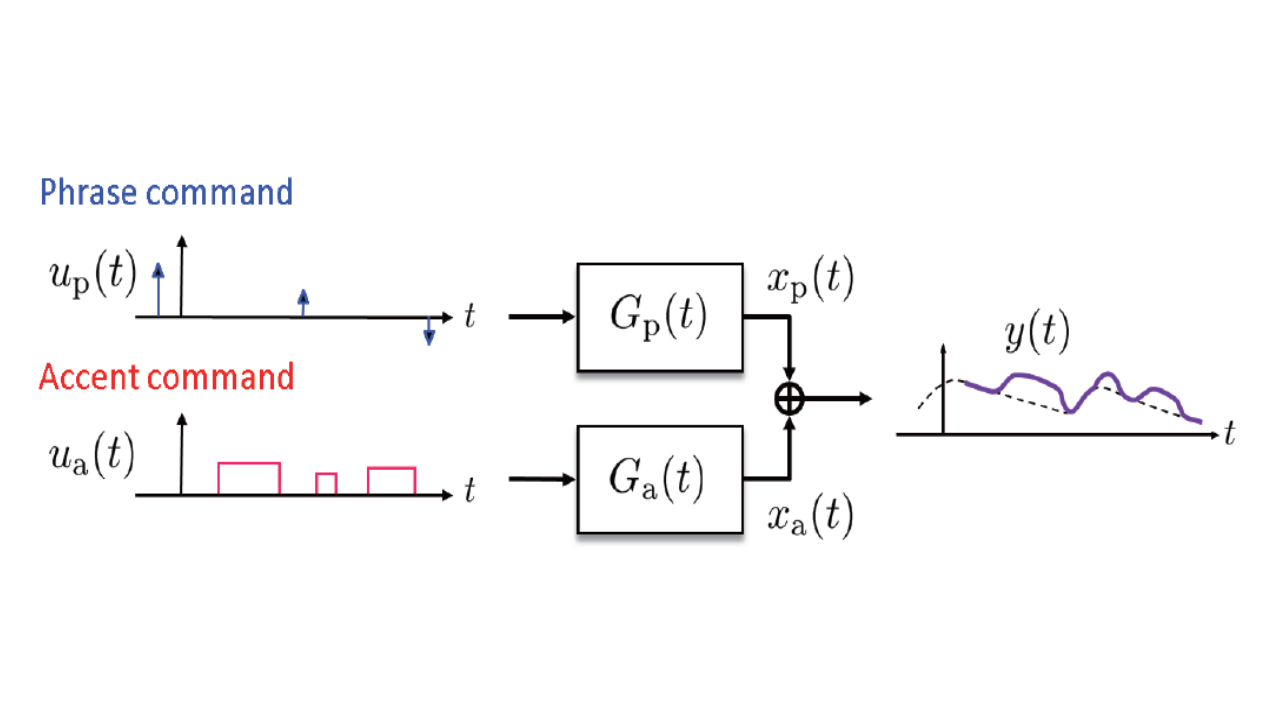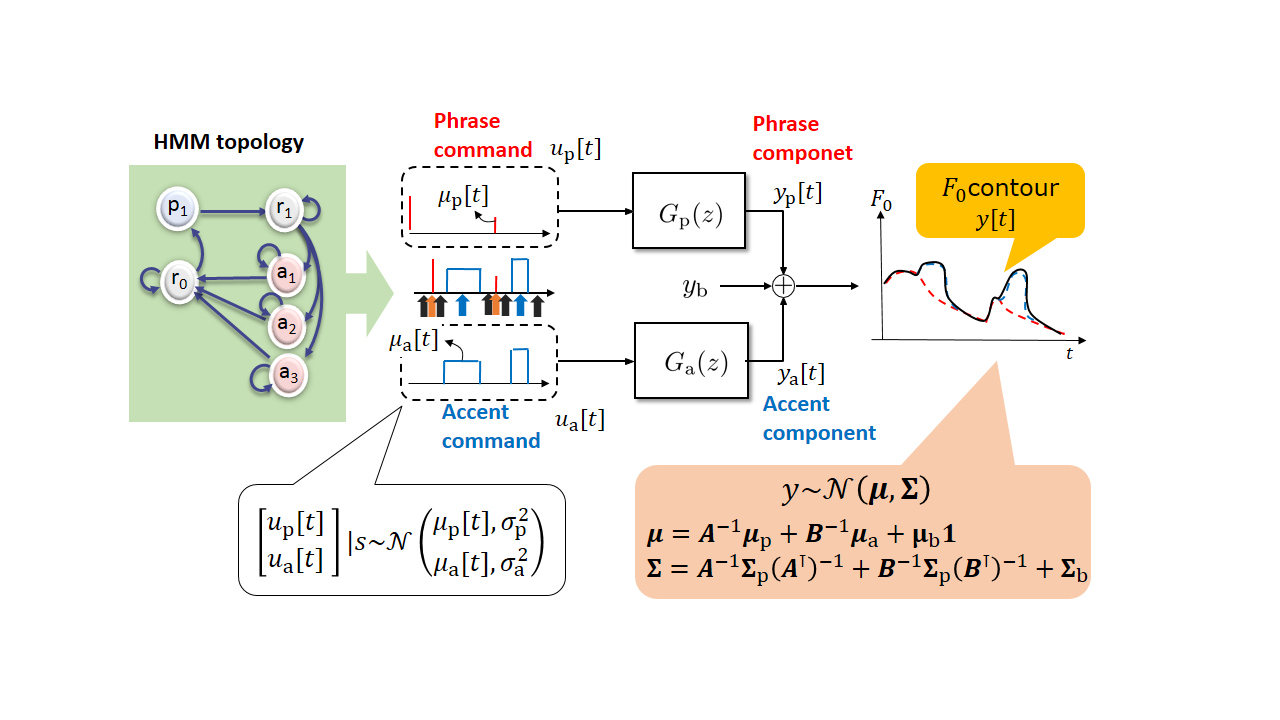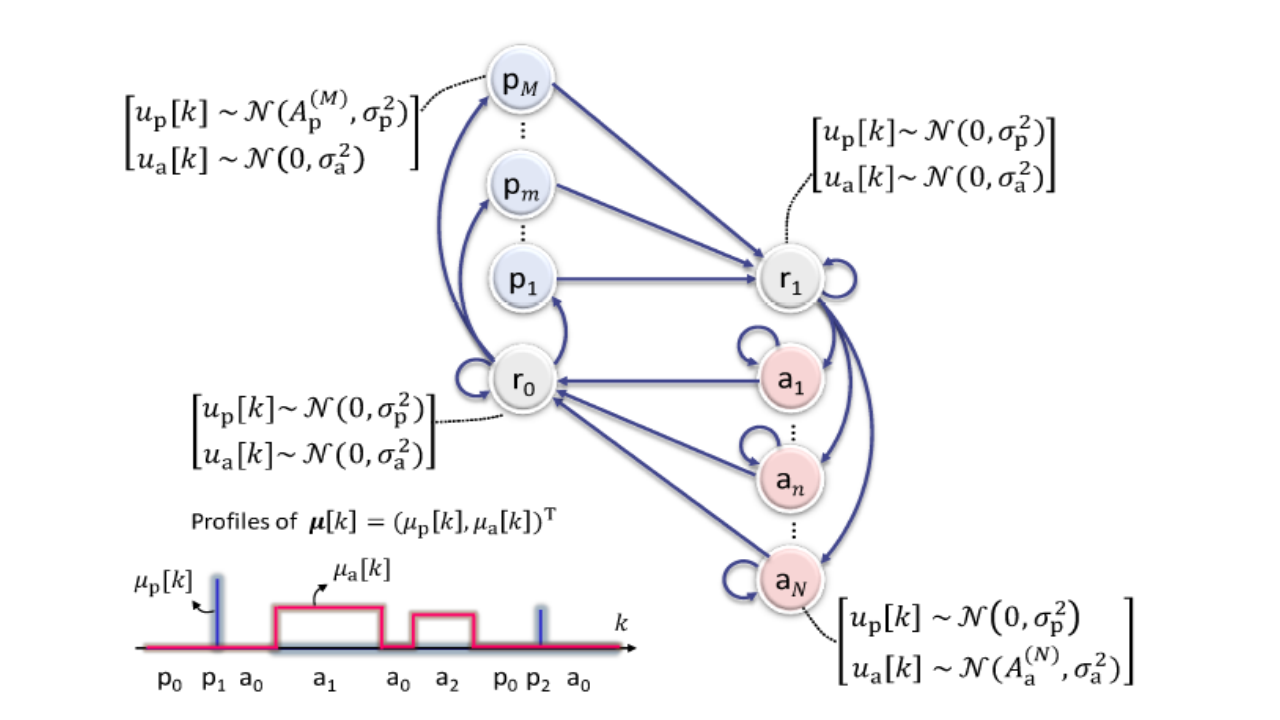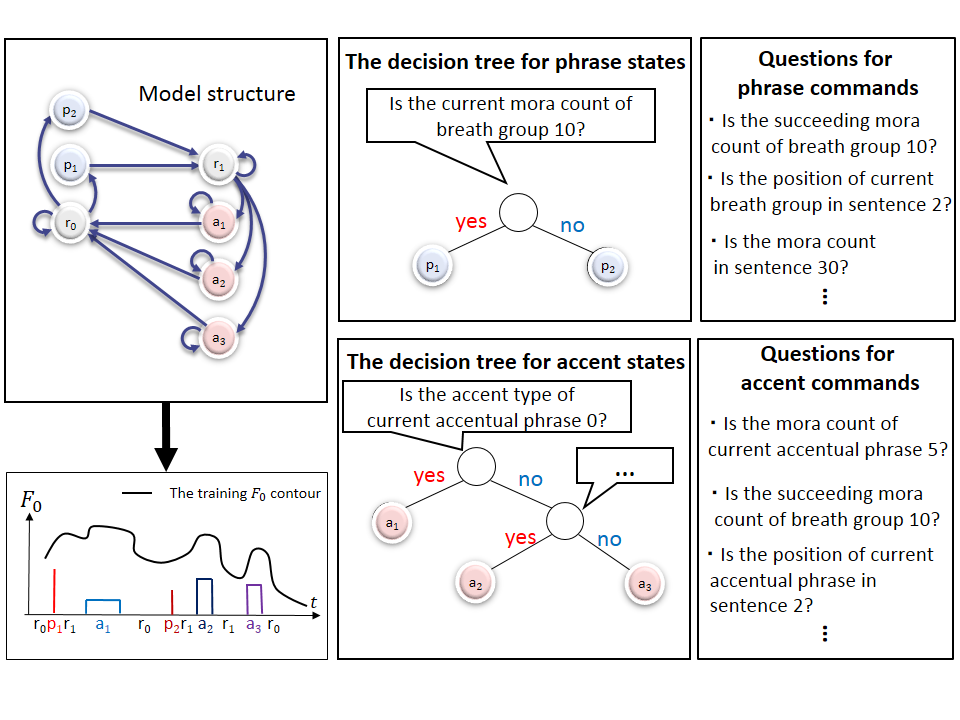Demo page for Interspeech 2014 paper
"Speech prosody generation for text-to-speech synthesis based on generative model of F0 contours"
Contributors: Kento Kadowaki, Tatsuma Ishihara, Nobukatsu Hojo (The University of Tokyo) and Hirokazu Kameoka (The University of Tokyo, NTT Corporation)
| Our Concept |
Keywords: Speech F0 contours, stochasric model, Fujisaki model, Hidden Marcov Model, EM algorithm
| Bibliography |
|
Demonstration of synthesized speech in japanese
The F0 contour generated by conventional method does not necessarily match the mechanical constraint. However, our method never generate such a F0 contours since our generative model is not only linguistically appropreate but also physically likely to be generated via the control phonation. Hence our method is able to synthesize F0 contours that is likely to originate from real voice.
Experimental conditions
- We used a stepwise method that we firstly estimated each command function by the method described in [Yoshizato2012SpeechProdody05] for each utterance in the first 450 sentences of HTS ver 2.1 demo script, and then we used clustering algorithm by using MDL. We used the HTS label sequence (http://hts.sp.nitech.ac.jp/) in order to extract the beggining of breath group and the range of accentual phrase.
| Conventional method | Proposed method | Japanese utterance in each sentence | sentence01 |
sentence01 |
sentence01 "chiisana unagiya ni nekkino youna monoga minagiru" |
sentence02 |
sentence02 |
sentence02 "dorobo demo haitta kato isshun boku wa omotta" |
sentence03 |
sentence03 |
sentence03 "gakusei wa repo-to o okuto chotto atama o sagete deteitta" |
sentence04 |
sentence04 |
sentence04 "kippu o kauno wa jidou hanbaiki kara dearu" |
sentence05 |
sentence05 |
sentence05 "tokai dewa deauhito no hotonndo ga mishiranu hito dearu" |
sentence06 |
sentence06 |
sentence06 "bunmei o sasaeru dodai ga kuzurete shimau" |
sentence07 |
sentence07 |
sentence07 "hitobito ga jiyuu ni deiri dekiru" |
sentence08 |
sentence08 |
sentence08 "dann dann jibunn ga osoroshiku natte ieni nigekaetta" |
sentence09 |
sentence09 |
sentence09 "gozenn chuude owaru rennshuu o netto urakara kaima mita" |
sentence10 |
sentence10 |
sentence10 "itsumono kyuujitsu no pata-nn o sugoshite higa kureru" |
sentence11 |
sentence11 |
sentence11 "ongaku no sukina oreno tameni wazawaza rokku myu-jikku o youi shitekite atta" |
sentence12 |
sentence12 |
sentence12 "fushigina kurai utsukushiku irodorareta michi o iku" |
sentence13 |
sentence13 |
sentence13 "masshiro na haga shiroi te-pu to tomoni yureta" |
sentence14 |
sentence14 |
sentence14 "nyuugaku shikenn o ukeru tokiyori hisshino omoi dearu" |
sentence15 |
sentence15 |
sentence15 "kochiramo kyatto wameite tobiagatta" |
sentence16 |
sentence16 |
sentence16 "kondo wa fuguno kisetsu ni itte mitai" |
sentence17 |
sentence17 |
sentence17 "musume no fianse de koitsu dakeniwa doushitemo makerarenai" |
sentence18 |
sentence18 |
sentence18 "watashi wa sore o ryokann ni motte kaetta" |
sentence19 |
sentence19 |
sentence19 "sorewa gyakkyou kara nukedashitai toiu setsunai hodono gannbou darou ka" |
sentence20 |
sentence20 |
sentence20 "mainichi byouinn made kayotta hahano aino fukasa tsuyosa dearu" |
|---|



